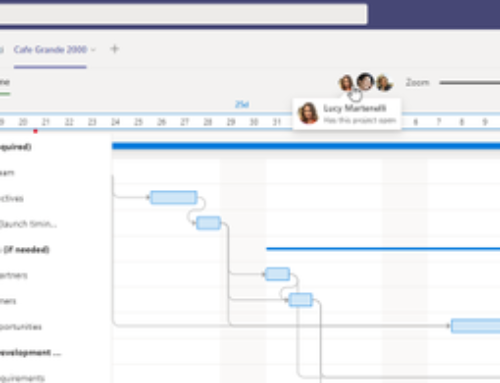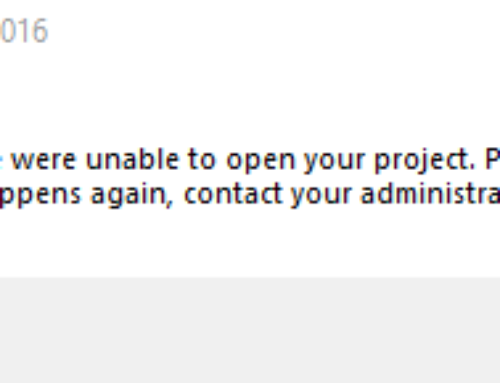The Project Manager’s Guide to Planning a Perfect Project
Thanks to the O365 team for providing this wonderful information to help Project Managers.
Being a project manager is a tough job. There are constant demands on your time, people to keep on track, pressure to do a certain amount of work in what often seems like an impossibly short amount of time and much more.
But it’s also a necessary role that can bring extraordinary value to your company. In fact, according to a study by PricewaterhouseCoopers, more than 60 percent of project failures are linked to internal issues such as insufficient resources or missed deadlines—i.e., situations a project manager can help avoid. In addition, it’s a growing industry, as more and more companies realize the importance of solid project management.
Being a project manager is like being a juggler who spins several plates in the air at once—not easy. There are constant demands on your time, people to keep on track, pressure to do a certain amount of work in what often seems like an impossibly short amount of time and much more.
In addition, it’s a growing industry, as more and more companies realize the importance of solid project management. Specifically, a separate Project Management Institute study estimated nearly 16 million new project management positions will be created around the world between 2010 and 2020, and the industry will grow by $6.61 trillion.
All that said, managing projects is a huge responsibility, no matter who your employer is. Whether you’re an official project manager or simply leading a project, the following seven tips should help you get your bearings and set your project up for success.
Tip 1: Establish clear goals for the project
Take a look at the big picture and determine what you want to accomplish with this project. If a client or outside stakeholder is involved in the project, external sources will obviously help determine your goals. Overarching goals you should consider include:
- Preventing scope creep, which means keeping the scope of the project from growing.
- Staying within a given budget.
- Completing all aspects of the project.
- Providing quality work.
- Completing work on time.
- Securing the right resources in advance.
Tip 2: Set expectations up front
Everyone should be on the same page in order to guarantee a successful project. Clearly sharing your expectations as the project lead and asking others to communicate their own is an important step in setting up any project. These expectations should include specific ways your team can achieve the goals you’ve already established. In addition, you’ll want to include the following:
- List of deliverables and due date.
- Statement of scope.
- Roles and responsibilities defined.
- Q&A process.
- Communication plan, including how often you plan to communicate with stakeholders/client.
Tip 3: Outline potential risks and how you’ll manage them if hazards arise
Let’s face it—even if you’ve planned everything to the minutest detail, the unexpected can still occur. So what’s a good project manager to do? Make a plan for the unexpected, of course! Obviously, you may not be able to predict the exact hazard that might befall your project—everything from bad weather to political unrest to technology flubs can occur – but it is still possible to lessen the potential impact of hazards through risk management.
Tip 4: Minimize the number of meetings
A study by Verizon Conferencing found that only 22 percent of meetings are considered “extremely productive” and 44 percent “very productive.” That leaves 34 percent of meetings as only somewhat or not at all productive. Obviously, meetings are a necessary part of project planning, but really consider whether a meeting is a best use of your time or if email or some other form of communication—like project planning software, which allows you to share files, assign tasks and exchange ideas without having to meet—can do the trick just as well. The more time spent in meetings means less time spent on actual deliverables. Consider that before sending yet another meeting invite.
Tip 5: Plan the perfect kickoff meeting
Speaking of meetings, the kickoff meeting sets the tone for the entire project. When planning this meeting, be sure to adhere to the following standards:
- Invite the right people and ensure the key players can be in attendance.
- Create a detailed agenda stating what the meeting will cover. This will help everyone stay on task and understand the meeting objective.
- Determine if this can be an online meeting or if it needs to be held in person. This will be different depending on how large the project is, whether you’re working with a new client, the budget for the project, etc. Keep in mind that in-person meetings are usually more complicated to plan—and more expensive too, especially if they involve travel.
- Reschedule if the key players can’t be there—there’s no point in holding a meeting without them. You’ll often have to hold another meeting to update them or get their input.
- Before forming the agenda, be sure to understand the point of the meeting and what information people should walk away from the meeting knowing.
Tip 6: Pull reports throughout the project
The only way to know if your project is on track is to pull consistent reports. This can often be accomplished through your project management software program. Reports help you measure the efficiency of your resource allocation and make sure you’re on track to reach your budget goals and deadlines.
Tip 7: Get the right tools
While there are many project management tools on the market, not all are created equal. Decide what you really need and compare the products that interest you. At the very least, be sure to choose a tool that allows you to do the following:
- Organize and link tasks to create timelines and plans.
- Share insights that help you better communicate progress.
- Quickly understand how to use the interface.
- Customize your plan to fit your team’s needs.
Even though being an amazing project manager is difficult, it’s still doable. You simply need the skills, know-how and appropriate tools to get the job done and achieve the right results.





